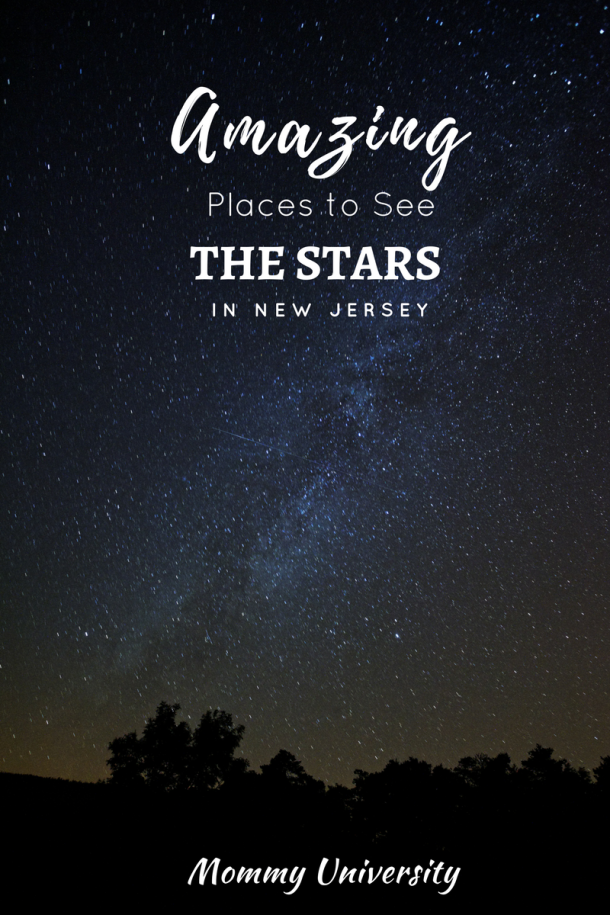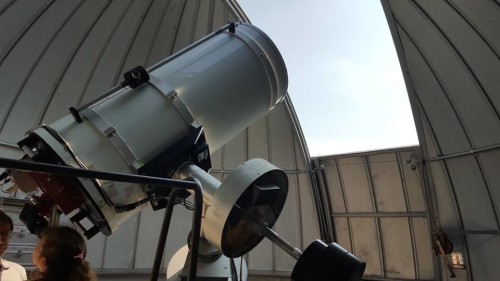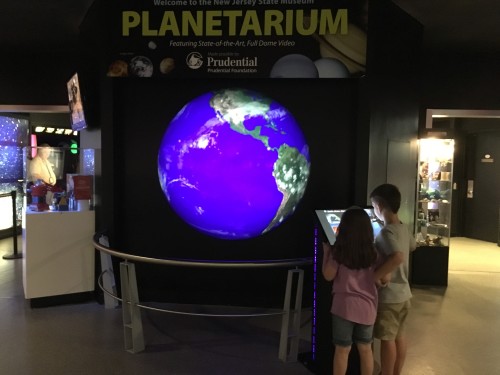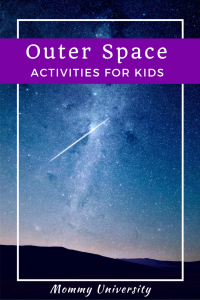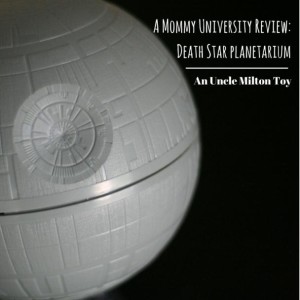Reach for the stars in New Jersey!
When children look up at the night sky their imagination soars. Whether it is gazing at the white moon or the splash of stars, we have a long history of believing in the impossible when stargazing. What we love about exposing children to astronomy is that it encourages an interest in earth science, life science, astronomy, physics and mythology. While it can seem difficult without the scientific background to introduce young children to outer space, it is actually quite easy.
In addition to reading books and watching movies, transform a day trip and include one of these Amazing Places! New Jersey offers many opportunities to expose children to planetariums, museum exhibits and telescope nights. The * denotes FREE opportunities for families.
Mommy University Presents
Amazing Places to See the Stars in New Jersey
Jennifer Chalsty Planetarium, Liberty Science Center

The largest planetarium of the Western Hemisphere currently resides in Jersey City! It is over 88′ high (which is the equivalent of five giraffes) and boasts close to three hundred trillion colors. Liberty Science Center opened this planetarium in the Winter of 2017 and is the fourth largest in the world! The visuals are stunning and that shouldn’t surprise us as it has 88 million pixels. What we love is that you can still watch movies and laser shows in this space and afterwards visit LSC!
Dreyfuss Planetarium, Newark
Your children can reach for the stars at New Jersey’s first planetarium at Dreyfuss Planetarium located in Newark Museum. This interactive theatre enables families to learn about astronomy and science. Admission to the shows at the planetarium are not included in the General Admission cost of the museum.
John W.H. Simpson Observatory, Titusville*
Located on the New Jersey side of Washington Crossing State Park, the John H.W. Simpson Observatory has a slide roof that enables optimal viewing. Operated by the Amateur Astronomy Association of Princeton, FREE stargazing is hosted on every Friday night (weather permitting). The “facility currently houses a 6.25″, f/15 vintage Hastings-Byrne achromatic refractor, and a research-grade Celestron 14″, f/11 Schmidt-Cassegrain reflector. The reflector is mounted on a state-of-the-art Bisque Paramount ME. It is recommended to check their Twitter account for updates on events. Also, do not use the GPS but rather the directions on their website.
Madeline D. and Joseph J. Longo Planetarium, Randolph
Located on the campus of The County College of Morris (CCM), the Longo Planetarium has been a local favorite with educational programs during the week for groups and open to the public on select weekends. The Planetarium has several shows that begin with information provided by Astronomer Christopher Fenwick. The cost is $10 per person.
New Jersey State Museum Planetarium, Trenton
The NJ State Museum hosts a spacious planetarium that seats 140 visitors with the ability to project 6,000 stars. What makes this a great space, however, is the diversity of shows they offer on the state-of-the-art Full DomeVideo as they not only have laser show as well as traditional sky projections. Admission to the planetarium is $7 for adults, $5 for children 12 and under.
North Jersey Astronomy Group, Montclair State University*
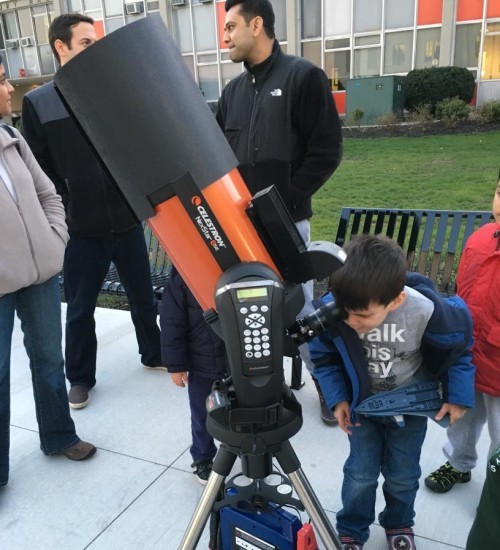
At Montclair State University, the North Jersey Astronomical Group encourages an appreciation of outer space and astronomy by hosting Telescope Nights. On Thursday nights at 7:30pm, young children can gather in front of Richardson Hall and CELS on the Science Quad, just east of the Student Center, and gaze up at different constellations. Older children and adults are generally welcome at 8pm.
Paul H. Robinson Observatory, High Bridge*

Located at the Buzz Aldrin Astronomical Center (named after the famous Montclair native), the Paul H. Robinson Observatory offers a Young Astronomer Association, talks, and of course stargazing. If weather permits, the Observatory is open to the public on Saturday evenings for a tour and a telescope viewing, and on the 4th Saturday of the month is a an astronomy presentation follow-up with a telescope viewing. The programs are FREE however you may consider joining the New Jersey Astronomical Association which, in addition to special discounts on publications, enables access to member only events!
Peyton Observatory, Princeton*
At Princeton University, the Department of Astrophysical Science hosts an informal open house monthly to observe the night sky at Peyton Observatory. Through a Schmidt-Cassegrain telescope, the staff and students on hand will assist with answering questions as you look at planets, nebulae and galaxies. Check the website where it lists the date for the next event and the status of the event as it is dependent on the weather.
Raritan Valley Community College Planetarium, Branchburg
At Raritan Valley Community College, there is the planetarium which uses the SkySkan DigitalSky system to recreate day and night skies. The planetarium seats 100 visitors and the public shows range for the preschool audience to adults. As well, they also offer sensory friendly shows for individuals who are on the Autism Spectrum. Admission is $8 per person which includes access to the observatory that contains a 16” Meade Telescope.
Robert J. Novins Planetarium, Toms River
Located on the Ocean Community College campus, the Robert J. Novins Planetarium has an impressive large dome that enables the fiber optic projector to take visitors on journeys through the galaxies. While all shows run for an hour, it is recommended to arrive early to watch the crisp images. The Novins Planetarium offers a vast array of shows to meet the needs of young children to adults. Admission is $10 for adults, $7 for children 12 and under; however, check their website for other discounts and bundled prices.
Robert A. Schommer Observatory, Piscataway*
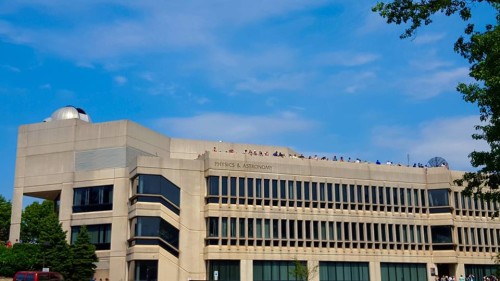
Image Source: Bob Ramos
Rutgers University boasts of many buildings and features including the Robert A. Schommer Observatory on it’s Piscataway campus. Open to the RU campus as well as the general public, Open Nights to stargaze are posted on their website and are weather dependent. Observe the night sky through the 20-inch optical telescope on the second and fourth Thursdays of the month. In the months of October to March it starts at 8:30 pm; however, starting in April, that time will start one hour after sunset.
Sheep Hill Observatory, Boonton*
Thanks to the hard work of the dedicated Sheep Hill Astronomical Association they were ablet to build the 16 foot dome Sheep Hill Observatory in Morris County. At this Observatory, there is an 18 inch, f/4.5 Newtonian Reflecting Telescope which is open to the public on the third Friday evening of the month starting at 7:30 pm (8:30 for during daylights). You can also reach out to them to arrange for group visits or check their calendar for special events.
William Sperry Observatory, Cranford*
The William Sperry Observatory is located at the Union Community College Campus inspiring students, faculty and the general public to develop an appreciation and understanding of outer space. The Observatory is open to the general public on Friday from 7:30pm-10:30pm to view the night sky as long as the weather permits. Knowledgeable volunteers are on hand to manage the equipment as well as answer questions. This is a FREE program with free parking accessible; however, donations are welcome!
William D. McDowell Observatory, Lyndhurst*
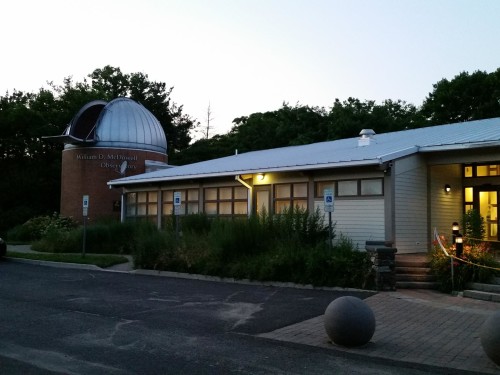
The William D. McDowell Observatory invites families on Wednesday evenings to observe the night sky with the FREE public viewing sessions. Equipped with a Classical-Cassegrain telescope, each session focuses on two major celestial objects. While the program runs from 8-10:30 pm, it is operated on a first come first serve basis with limited seats. While all ages are welcome, visitors must be able to climb the 25 steps in spiral formation.
United Astronomy Club of New Jersey, Hope*
The United Astronomy Club of New Jersey, offers FREE weekly programs from April to October at their observatory in Jenny Jump State Forest. On Saturdays the program begins at 8pm beginning with an astronomy presentation no matter the weather which follows up with gazing through the telescope until 10:30pm. Check their website for details on the specific programs they host.
Bonus: Franklin Institute, Philadelphia
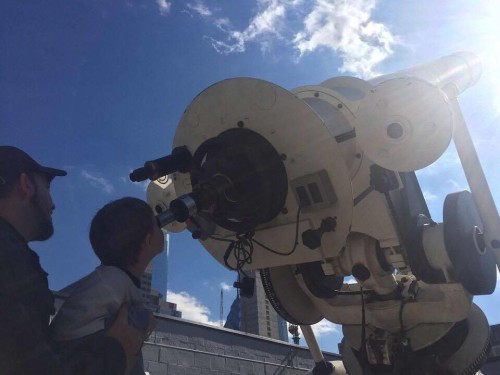
One of our favorite stops at The Franklin Institute is the Fels Planetarium where we have listened to Neil De Grasse Tyson narrate shows. The immersive dome measures 60 feet but since this is always a popular destination make sure to arrive 15 minutes early to the start time. However, the Franklin also boasts the N. Bloom Observatory which hosts monthly stargazing events. The space is limited for these events so make sure to purchase tickets in advance.
Hayden Planetarium, New York City
Located in the heart of the Rose Center for Earth and Space is the Hayden Planetarium which has inspired some of the greatest minds for decades. The 87 foot diameter sphere has the appearance of floating inside a glass cube yet provides an immersive experience. Seating 429 visitors, it has a custom-made Zeiss Mark IX Star Projector which combined with the Digital Dome Projection System creates a hyper-realistic view of different destinations in outer space. There is a cost to see a Space Show in addition to General Admission.
